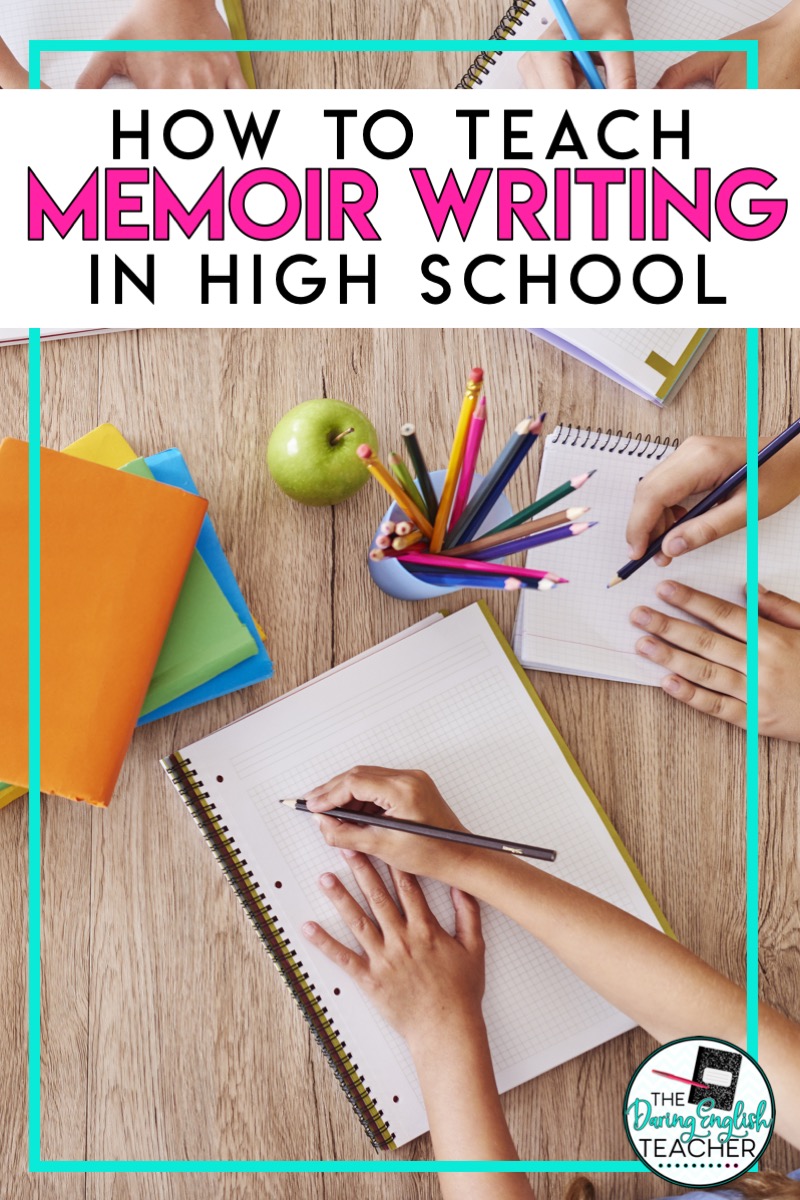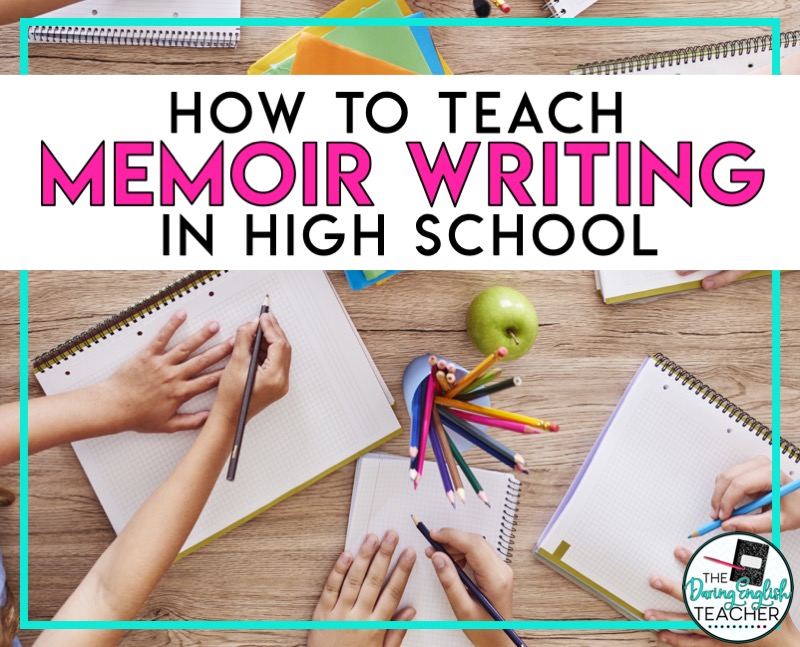A great way to get students writing in middle school or high school English class is by assigning a memoir project. In this blog post, you will learn how to teach memoir writing to your secondary ELA students.
When thinking about writing a memoir, people get nervous, especially students, as they will have to let down their walls and share a portion of their lives. Also, it is hard to remember fragments of memories because it will be a challenge to recall significant moments in their lives.
Though it is important to remind students that they do not have to share memories that will be uncomfortable to write, they can choose mundane memories like a walk to school. By writing about these small moments, students will learn how to remember and become comfortable writing the critical ones.
But before writing, teachers will need to explain the importance of senses and interviewing skills since students will need to interview various people to help them recall a memory. This post may contain affiliate links.
How to Teach Memoir Writing: 3 Tips for Teaching Memoir Writing
Teaching Memoir Writing: Use a Memoir as a Mentor Text
A great way to introduce students into memoir writing is by reading a memoir in the classroom. For example, Jeannette Walls, author of The Glass Castle, interviewed her mother to recount their lives while she was growing up. After students talk with someone to help them remember a particular event, it is then time to have students use descriptive writing skills to write about the event in a way that appeals to the senses. Having the recollection of a memory, students can remember the type of senses they had, and use it for the memoirs. For instance, a student will write about the cold feeling while walking home in a blizzard, and the taste of snowflakes. Asking others about distant memories will shed light on them, and produce a great memoir full of insight. 
Another discussion to bring up to students is about traumatic experiences, and it is best to take a cautious approach. The reason to talk about this is to show students that memoir writing might be tough, especially if a student chooses to write about a traumatic event. However, it is of the utmost importance that students feel safe in your classroom while writing their memoirs.
If a student isn’t comfortable opening up and sharing, it is vitally important not to push for details. Students will write and share about trauma on their own terms. That is why it is essential for teachers also to encourage students to write memoirs that don’t include any trauma.
Students must know that adult writers had difficulty writing about their experiences, like Gerda Weissmann Klein wrote about her survival in the holocaust in her memoir, All But My Life. Also, Reyna Grande wrote about her struggles of immigration in her memoir, The Distance Between Us. Grande and Klein had distinct experiences, and each experienced trauma through their experience. Writing these stories was most likely not an easy and light-hearted task.
Reminding students of that will make them feel better, for they will not feel alone. Also, tell your class that your classroom is a safe space for their writing if students choose to write about a mature theme. Another key element to consider is that students know that teachers are court-mandated reporters.
Teaching Memoir Writing: Interview Relatives
Have your students ask relatives and themselves about events with these questions:
- What day was it?
- What was the weather?
- What was I wearing?
- What was I doing, and why?
These questions will help them to make the sight of vague memories and add details about them. Besides asking questions, students can bring photos to recreate whatever happened in that picture since the images can show trips to Europe, to the beach, or parties. However, sketch notes will benefit students more, for they can draw what is in the photograph, and the image will help them recollect other details that were not in a photo. For instance, if a student had a picture of a day at the beach and remembered there was a dolphin in the water, even though it was not in the photograph, they will draw it and other images. After the students finished sketching, tell them to add a title to the top of the page.
Teaching Memoir Writing: One Sentences At A Time!
Now the students will be ready to write since they have answers to their questions, photos, and sketch notes. It is time for them to write one paragraph; however, they will add details to it. For example, one of your students may write, ‘I went to the carnival last night. It was fun even when my friends had a popcorn fight. We went on a lot of rides. My friend Claudia tried to make me eat chocolate ice cream, but I do not like that flavor.’
Then the student would add a description to their paragraphs. It will look like this with details: ‘last night, I went to the carnival, and the moon was our night light. There were many rides, and my favorite was the white one roller coaster with the rainbow lights, it made me dizzy. I never felt the wind rush towards us so fast, and heard kids shriek so loudly before. After, I watched in amusement as my friends tossed the buttery popcorn onto each other. But I had to run away from Susan, who tried to make me eat chocolate ice cream, which she knows I hate.’
Notice how adding details make a difference? Students can capture the reader! Hopefully, your students will enjoy it and will find comfort in writing their memories down.



One Comment
Am just giving my students their personal narrative assignment today. We have been using The Color of Water as a kind of mentor text–it's been great. Perfect text for teaching personal narrative. Has all the hallmarks of good narrative writing and showing vs telling, which is something we've been working on. Thanks for your suggestions; they are helpful. When it comes to memoir, yes, being cautious about trauma is especially important. High schoolers often think everything has to be intense drama, when you're right–a memoir about walking to school could be fantastic. Thanks.